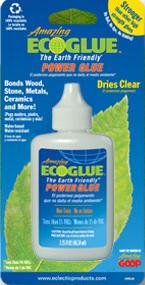 Go take a look at the adhesives you use in your crafting. Go ahead, I’ll wait here.
Go take a look at the adhesives you use in your crafting. Go ahead, I’ll wait here.
Back? Ok, good.
What is the one thing that they probably have in common? Does it say somewhere “use in well ventilated area” or some similar warning? Well, that warning often accompanies many of the glue and adhesive products found on the shelf at the crafting supply store and in crafters’ homes. That warning is there because of the chemicals used in the adhesives. Chemicals that, if inhaled in concentrated amounts, can be bad for you, hence the “well ventilated” part.
EcoGlue is a new white craft glue that claims eco-friendly properties. It contains less than 1% of volatile organic compounds or VOCs, has virtually no hazardous air pollutants, contains no animal derivatives and does not carry a “well ventilated” warning on its label. In fact its packaging is made from 100% recycled content and carries a “non-toxic” stamp.
I got the chance to try out this new glue and ran it through some simple and highly unscientific tests to see if it the eco-friendly label still meant quality adhesive or if it was just some watered down glue.
EcoGlue says that it can adhere to wood, glass, tile, stone, and metal. Unfortunately my crafting and crafting needs are more humble than this little glue boasts so I only tested it on paper and fabric.
Upon first opening the glue, I sniffed it. No, I wasn’t looking to get high. Other white craft glue has a very strong and familiar smell to it. This glue had virtually none. Bonus points. I had a bit of trouble getting the glue out of the bottle initially. I turned to their web page and learned that the tip needed to be snipped for the glue to flow smoothly. These directions are not on the packaging because of a manufacturing goof and it outlines this on the site.
Once that problem was solved I tried the now easily flowing glue on newspaper, tissue paper, cardboard, felt, construction paper and yarn. Just a couple of dots bonded two smallish pieces of cardboard in a matter of minutes even though the instructions say that the “initial bond forms in 20-30 minutes. 3-6 hours for 80% strength. 24 hours for full strength. Water resistance reached within 3-5 days.”
I watered the glue down and made a runny-milky substance to use for the tissue paper. I painting the mixture onto some cardboard, and layered a piece of tissue paper and painted the mixture on top of the tissue. This seemed to help the tissue bond totally to the cardboard. I continued in this matter, layering the glue mixture and tissue paper until the area was covered. I left some of the tissue hanging off the edges to test the strength of the bond. The tissue was dry and flat in a couple of hours. I tried lifting the tissue off the cardboard but it wouldn’t budge. Gold stars.
It easily bonded construction paper and newspaper to themselves in minutes, so I decided to step up this test. I pooled some glue on the construction paper and attached some yarn. I let it set over night and in the morning the glue had dried clear and the yarn was firmly attached to the construction paper.
I then painted two small pieces of felt with non-diluted glue and pressed the two together. At first the glue started to seep through like other adhesives tend to do, but the felt remained cool to the touch and non-messy. I left the felt over night to cure. In the morning the felt was ruff and hard. I easily pulled the two pieces a part. Not good. The glue had adhered to the felt but it failed to secure the two pieces to each other. Perhaps with a diluted mixture or if only one side of the felt is painted with glue, it might work better.
All in all I think this glue potential. It works well in the paper area, at both full strength and when diluted with water for a gentler bond. For fabric, use with caution as it takes the full time to dry and in my test didn’t bond the felt together. I think it is a good alternative to the other white glue since it is non-toxic and it doesn’t have a smell due to the low VOC count.
If I have more heavy duty gluing needs I will try this glue out and let you know the results. Any one try the glue and want to share their experiences?
EcoGlue is available at Hobby Lobby, Ace Hardware and True Value stores.


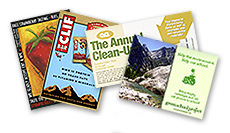

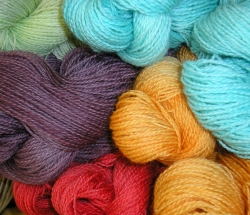

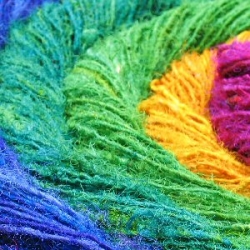

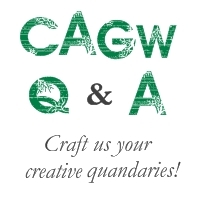
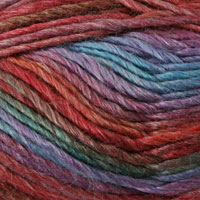
Hmmm…did you sniff the low VOC glue to find out that it doesn’t a smell like I did with the wood glue I tested? 🙂 Way to craft dangerously!!!
Hmmm…did you sniff the low VOC glue to find out that it doesn’t a smell like I did with the wood glue I tested? 🙂 Way to craft dangerously!!!
Hmmm…did you sniff the low VOC glue to find out that it doesn’t a smell like I did with the wood glue I tested? 🙂 Way to craft dangerously!!!
Good timing– I’ve found myself thinking a lot about glue lately. Namely in terms of my papercrafting-type projects, since I usually use scrapbook adhesives and those have all sorts of throwaway extra packaging from the rollers and whatnot. (Doesn’t happen to say anything on the bottle about acid-free or anything, does it?)
Good timing– I’ve found myself thinking a lot about glue lately. Namely in terms of my papercrafting-type projects, since I usually use scrapbook adhesives and those have all sorts of throwaway extra packaging from the rollers and whatnot. (Doesn’t happen to say anything on the bottle about acid-free or anything, does it?)
Good timing– I’ve found myself thinking a lot about glue lately. Namely in terms of my papercrafting-type projects, since I usually use scrapbook adhesives and those have all sorts of throwaway extra packaging from the rollers and whatnot. (Doesn’t happen to say anything on the bottle about acid-free or anything, does it?)
Pingback: 5 Ways to Make Your Own Fabric Labels : Crafting a Green World
Pingback: Celebs try out Cool Green Crafts at Sundance : Crafting a Green World
Well, Becky, over three months and no response on your question as to whether this stuff is archival or acid-free. I guess us scrapbookers are stuck being eco-hazardous. I was going to ask about that myself though.
BTW, i don’t guess you would know anything about FSC certified or recycled paper for scrapbooking, would you?
Well, Becky, over three months and no response on your question as to whether this stuff is archival or acid-free. I guess us scrapbookers are stuck being eco-hazardous. I was going to ask about that myself though.
BTW, i don’t guess you would know anything about FSC certified or recycled paper for scrapbooking, would you?
Well, Becky, over three months and no response on your question as to whether this stuff is archival or acid-free. I guess us scrapbookers are stuck being eco-hazardous. I was going to ask about that myself though.
BTW, i don’t guess you would know anything about FSC certified or recycled paper for scrapbooking, would you?
http://www.eclecticproducts.com/ecoglue/tds/EcoGlue%20Craft%20TDS%20122007.pdf
Well, well. Even the company’s own data sheet does not specify whether this stuff is acid free, lignin free, or archival.
I think I’ll run right out and buy some. NOT!
http://www.eclecticproducts.com/ecoglue/tds/EcoGlue%20Craft%20TDS%20122007.pdf
Well, well. Even the company’s own data sheet does not specify whether this stuff is acid free, lignin free, or archival.
I think I’ll run right out and buy some. NOT!
http://www.eclecticproducts.com/ecoglue/tds/EcoGlue%20Craft%20TDS%20122007.pdf
Well, well. Even the company’s own data sheet does not specify whether this stuff is acid free, lignin free, or archival.
I think I’ll run right out and buy some. NOT!
I’m so sorry for not following up with this post earlier and missing the comments and questions. Here’s the scoop on EcoGlue for scrapbooking:
EcoGlue is acidic. It has a PH level of 3. You may know that PH is measured on a scale of 1-14; 7 meaning neutral; anything below 7 is acidic and anything above 7 is alkaline. The closer the PH level to 1, the higher acidic it is. We can’t say it is acid-free and since the level is fairly high we wouldn’t claim it’s photograph safe.
However, we did some testing and it didn’t harm the photographs. I realize that scrapbookers need acid free products for the long-term preservation of images, too. If you want to use it for scrapbooking, please test on samples first.
Again, sorry for the delay!
I’m so sorry for not following up with this post earlier and missing the comments and questions. Here’s the scoop on EcoGlue for scrapbooking:
EcoGlue is acidic. It has a PH level of 3. You may know that PH is measured on a scale of 1-14; 7 meaning neutral; anything below 7 is acidic and anything above 7 is alkaline. The closer the PH level to 1, the higher acidic it is. We can’t say it is acid-free and since the level is fairly high we wouldn’t claim it’s photograph safe.
However, we did some testing and it didn’t harm the photographs. I realize that scrapbookers need acid free products for the long-term preservation of images, too. If you want to use it for scrapbooking, please test on samples first.
Again, sorry for the delay!
I’m so sorry for not following up with this post earlier and missing the comments and questions. Here’s the scoop on EcoGlue for scrapbooking:
EcoGlue is acidic. It has a PH level of 3. You may know that PH is measured on a scale of 1-14; 7 meaning neutral; anything below 7 is acidic and anything above 7 is alkaline. The closer the PH level to 1, the higher acidic it is. We can’t say it is acid-free and since the level is fairly high we wouldn’t claim it’s photograph safe.
However, we did some testing and it didn’t harm the photographs. I realize that scrapbookers need acid free products for the long-term preservation of images, too. If you want to use it for scrapbooking, please test on samples first.
Again, sorry for the delay!
Re: testing on photos
How long have you kept the photos that you used for the test? The issue with acid is that it will harm paper and photos over time. It leaches out of paper and adhesives that have a high acid content, and can migrate onto photographs and mementos on a page. It causes them to discolor and become brittle, eventually destroying them. This doesn’t take a hundred years. It only takes a few years, or in some cases a few months. Anybody using this stuff in a scrapbook needs to be aware that 6 months from now, they may need to reprint the photos and make all new copies of their existing pages.
It may well have the same effect on fabric if it really has a PH of 3. Yep, fabrics are also susceptible to acidd migration. That’s why new brides are told to store their wedding dresses in acid-free tissue.
At best, I’d recommend it for temporary projects and kids’ crafts. For now, us papercrafters are still forced to be eco-hostile.
Re: testing on photos
How long have you kept the photos that you used for the test? The issue with acid is that it will harm paper and photos over time. It leaches out of paper and adhesives that have a high acid content, and can migrate onto photographs and mementos on a page. It causes them to discolor and become brittle, eventually destroying them. This doesn’t take a hundred years. It only takes a few years, or in some cases a few months. Anybody using this stuff in a scrapbook needs to be aware that 6 months from now, they may need to reprint the photos and make all new copies of their existing pages.
It may well have the same effect on fabric if it really has a PH of 3. Yep, fabrics are also susceptible to acidd migration. That’s why new brides are told to store their wedding dresses in acid-free tissue.
At best, I’d recommend it for temporary projects and kids’ crafts. For now, us papercrafters are still forced to be eco-hostile.
Re: testing on photos
How long have you kept the photos that you used for the test? The issue with acid is that it will harm paper and photos over time. It leaches out of paper and adhesives that have a high acid content, and can migrate onto photographs and mementos on a page. It causes them to discolor and become brittle, eventually destroying them. This doesn’t take a hundred years. It only takes a few years, or in some cases a few months. Anybody using this stuff in a scrapbook needs to be aware that 6 months from now, they may need to reprint the photos and make all new copies of their existing pages.
It may well have the same effect on fabric if it really has a PH of 3. Yep, fabrics are also susceptible to acidd migration. That’s why new brides are told to store their wedding dresses in acid-free tissue.
At best, I’d recommend it for temporary projects and kids’ crafts. For now, us papercrafters are still forced to be eco-hostile.
Check out what this guy did with ecoglue:
http://www.widwi.com/widwi.php?item=99&Paper+Birch+rings-world-s+only?
Check out what this guy did with ecoglue:
http://www.widwi.com/widwi.php?item=99&Paper+Birch+rings-world-s+only?
Check out what this guy did with ecoglue:
http://www.widwi.com/widwi.php?item=99&Paper+Birch+rings-world-s+only?
Pingback: Crafty Reuse: Recycled Valentine’s Day Pop Up Card [VIDEO] : Crafting a Green World
Pingback: Newspaper Art Tutorial
Pingback: How To: A “Happy New Year” Banner from Old Christmas Cards
Pingback: How To: Sheet Music Bottle
Pingback: How To: Sheet Music Bottle - Free Plans, Hacks, Howto's and other DIY stuff - Free Plans Online
Pingback: Toilet Paper Roll Valentine
Pingback: Toilet Paper Roll Valentine - Free Plans, Hacks, Howto's and other DIY stuff - Free Plans Online
do you know if its vegan?
Pingback: Crafting a Green World | How To: DIY Dishwasher Magnet | Page: 1 | Crafting a Green World
Pingback: Crafting a Green World | Recycled Trick-or-Treat Bucket | Page: 1 | Crafting a Green World
Pingback: Crafting a Green World | Pumpkin Luminary Jar! | Page: 1 | Crafting a Green World
Pingback: Crafting a Green World | Toilet Paper Roll Turkey | Page: 1 | Crafting a Green World
Pingback: Crafting a Green World | Upcycled Lid Jewelry Tray | Page: 1 | Crafting a Green World
Pingback: Crafting a Green World | Recycled DIY: Sugar, Cream, and Coffee Canisters | Page: 1 | Crafting a Green World